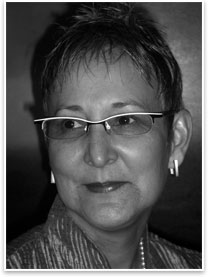| Wendy Ornelas, FAIA
by Russell Boniface
Associate Editor
Summary: Wendy
Ornelas, FAIA, is the newly elected 2010 president of the National
Architectural Accrediting Board (NAAB). Ornelas spoke with AIArchitect about the process, adoption, and implementation of the new (2009) NAAB Conditions for Accreditation; mentorship and encouraging youngsters to pursue architecture as a career; and the importance of faculty to have an active architecture practice. Ornelas is principal of her firm Condia + Ornelas Architects.
 Wendy Ornelas is an associate dean and professor at Kansas State University. She is the director of Environmental Design and Planning and the director of the Architecture Internship Program at the College of Architecture, Planning, and Design. She became president of the NAAB on October 24. Ornelas calls it an honor to be elected NAAB president because it will enable her to make a difference in students’ lives.
NAAB Conditions for Accreditation
Ornelas worked on the adoption
and implementation of the 2009 NAAB Conditions for Accreditation. “Working
on the Accreditation standards affects everyone who goes to school
and enters the profession,” Ornelas says. For more than two
years, NAAB worked on the new conditions with the other four collateral
organizations: the AIA, American Institute of Architecture Students,
the Association of Collegiate Schools of Architecture (ACSA), and
the National Council of Architectural Registration Boards (NCARB).
The group researched what was good about the old conditions and what
should be implemented into the new conditions.
“All five collaterals had a task force with different subjects, and members of the collaterals got together to brainstorm, research, and come together on notions,” Ornelas says. ”We looked at this like a design problem. We went through schematics, design development, programming, and all the things one goes through in a design project. We came up with five different scenarios on what the potential could be. At the schematic stage, we sent the five different scenarios to a group that critiqued it and sent it back, and we reworked it. Last October, we brought together a large group of the collaterals to critique the different scenarios on how the new conditions were going to be set up.”
Ornelas worked with NAAB to draft the new conditions. A final draft was voted on, which became a public document Aug 1. “We tried to elevate the notion of what it means to accredit a school of architecture and bring things together in a much more coherent fashion,” Ornelas says. “We grouped like-minded things together into three realms: critical thinking, integrated building practices that are technical skills and knowledge that is more hands-on, and leadership and practice.”
Ornelas says the new conditions will make it easier for the schools to tell parents, potential students, and current students what the major things are for becoming an architect. “You need to be a leader, you need to have technical skills, and you need to think critically and represent your ideas,” Ornelas says. “It became a much clearer set of documents to be able to explain what the accreditation process is, as well as what the big ideas are for somebody to learn to become an architect.”
Ornelas says her challenge will be to train teams that will visit schools how the new document works. “We need to train the schools on how to put their document together, which is the Architecture Program Review (APR) document,” she says. “The schools put together a document saying how they fulfilled the conditions. A visiting team will go on-site to look at the document sent into NAAB, as well as evidence when they assess the schools, and write a visiting team report.
“Because it is so different, we need to train the whole community that works with accreditation in how this document is different. We are working on a training program to help assess what we have done well in the past and what we can do better to help train.” She mentions Webinars as a possible training method.
The importance of mentorship
“I think mentorship is probably
the key aspect to young people in school and emerging professionals
when they start practice,” Ornelas says.” I was extremely
lucky because I had a good mentor. He helped me to understand what
it meant to practice in the profession and what things were important.
I think there are so many young people who get put in situations
where they just need to get the job done that no one is taking the
time to help them understand why they are doing what they are doing,
the goals of the project and for them as a person, and how they fit
into the profession. Through school I have had lots of students,
now alumni, whom I consider mentees, because I know that they need
that encouragement.
“I care about them and how they see themselves as professionals—whether they decide to be an architect or to do something that is on the edge of the profession—showing them the that someone does care and the importance of having that person to talk to.”
Faculty having an active architecture practice
“As a full-time
tenured track faculty member, I am probably not that typical in that
I still practice,” she notes. “For me, having that connection
is important. I think the students understand the profession better.
I understand how the profession is changing all the time if I keep
one hand in the profession and one hand in academia. I think I am
a better teacher and better practitioner because of my relationship
with the university. The students really do need to see what the
result is. If we only have theoretical of PhDs teaching, the students
don’t see the connection between what they are learning in
the academy and what the result is of practice.” |



